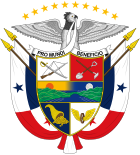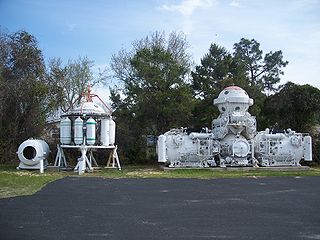 |
|---|
List of presidents of the National Assembly of Panama.
Below is a list of office-holders from 1956:
 |
|---|
List of presidents of the National Assembly of Panama.
Below is a list of office-holders from 1956:

Central America is a subregion of North America. Its political boundaries are defined as bordering Mexico to the north, Colombia to the southeast, the Caribbean to the east, and the Pacific Ocean to the southwest. Central America is usually defined as consisting of seven countries: Belize, Costa Rica, El Salvador, Guatemala, Honduras, Nicaragua, and Panama. Within Central America is the Mesoamerican biodiversity hotspot, which extends from southern Mexico to southeastern Panama. Due to the presence of several active geologic faults and the Central America Volcanic Arc, there is a high amount of seismic activity in the region, such as volcanic eruptions and earthquakes, which has resulted in death, injury, and property damage.

Panama, officially the Republic of Panama, is a country in Latin America at the southern end of Central America, bordering South America. It is bordered by Costa Rica to the west, Colombia to the southeast, the Caribbean Sea to the north, and the Pacific Ocean to the south. Its capital and largest city is Panama City, whose metropolitan area is home to nearly half of the country's over 4 million inhabitants.

Panama's foreign relations are conventional in outlook, with Panama being especially aligned with United States since the 1989 US invasion to topple the regime of General Manuel Noriega. The United States cooperates with the Panamanian government in promoting economic, political, security, and social development through U.S. and international agencies.

The Panama Canal is an artificial 82-kilometer (51-mile) waterway in Panama that connects the Atlantic Ocean with the Pacific Ocean, cutting across the Isthmus of Panama, and is a conduit for maritime trade. Locks at each end lift ships up to Gatun Lake, an artificial fresh water lake 26 meters (85 ft) above sea level, created by damming up the Chagres River and Lake Alajuela to reduce the amount of excavation work required for the canal. Locks then lower the ships at the other end. An average of 200,000,000 L (52,000,000 US gal) of fresh water is used in a single passing of a ship. The canal is threatened by low water levels during droughts.

Panama City, also known as Panama, is the capital and largest city of Panama. It has a total population of 1,086,990, with over 2,100,000 in its urban area. The city is located at the Pacific entrance of the Panama Canal, in the province of Panama. The city is the political and administrative center of the country, as well as a hub for banking and commerce.

An isthmus is a narrow piece of land connecting two larger areas across an expanse of water by which they are otherwise separated. A tombolo is an isthmus that consists of a spit or bar, and a strait is the sea counterpart of an isthmus, a narrow stretch of sea between two landmasses that connects two larger bodies of water.

The United States invaded Panama in mid-December 1989 during the presidency of George H. W. Bush. The primary purpose of the invasion was to depose the de facto ruler of Panama, General Manuel Noriega, who was wanted by U.S. authorities for racketeering and drug trafficking. The operation, codenamed Operation Just Cause, concluded in late January 1990 with the surrender of Noriega. The Panama Defense Forces (PDF) were dissolved, and President-elect Guillermo Endara was sworn into office.

The Panama Canal Zone, also simply known as the Canal Zone, was a concession of the United States located in the Isthmus of Panama that existed from 1903 to 1979. It consisted of the Panama Canal and an area generally extending five miles (8 km) on each side of the centerline, but excluding Panama City and Colón. Its capital was Balboa.

The Panama–Pacific International Exposition was a world's fair held in San Francisco, California, United States, from February 20 to December 4, 1915. Its stated purpose was to celebrate the completion of the Panama Canal, but it was widely seen in the city as an opportunity to showcase its recovery from the 1906 earthquake. The fair was constructed on a 636-acre (257-hectare) site along the northern shore, between the Presidio and Fort Mason, now known as the Marina District.

The National Assembly of Panama, formerly the Legislative Assembly of Panama(Asamblea Legislativa de Panamá), is the legislative branch of the government of the Republic of Panama.

Panama is divided into ten provinces and four provincial-level indigenous regions.

The Panama national football team represents Panama in men's international football and is governed by the Panamanian Football Federation. The team represents all three FIFA, CONCACAF and the regional UNCAF.

.pa is the Internet country code top-level domain (ccTLD) for Panama. It was first registered in 1994-05-25. It is administered by NIC Panamá, which is run by the Universidad Tecnologica de Panama.

A Panamanian passport is the passport issued to citizens of Panama to facilitate international travel. Panamanian citizens enjoy visa-free access to 118 countries and territories. The passports are issued by the Passports Authority of Panama.

The following outline is provided as an overview of and topical guide to Panama:

The Man in the Sea Museum is located at 17314 Panama City Beach Parkway, Panama City Beach, Florida. It has exhibits and documents related to the history of diving. Some of these exhibits include U.S. Navy SEALAB I, Commercial Diving, Underwater Submersibles, and Assorted Underwater Masks and Helmets. Many of the exhibits are hands-on.

The following is an alphabetical list of topics related to the Republic of Panamá.

The Panama Papers are 11.5 million leaked documents that were published beginning on April 3, 2016. The papers detail financial and attorney–client information for more than 214,488 offshore entities. The documents, some dating back to the 1970s, were created by, and taken from, former Panamanian offshore law firm and corporate service provider Mossack Fonseca, and compiled with similar leaks into a searchable database.